Ready to jump into the exhilarating world of skydiving? It’s essential to make yourself mentally and physically ready before starting on this thrilling and amazing experience. Wondering how to prepare for skydiving? Don’t look elsewhere! To help you thoroughly enjoy your first or subsequent skydiving adventure, we’ll provide you with priceless information in this article.
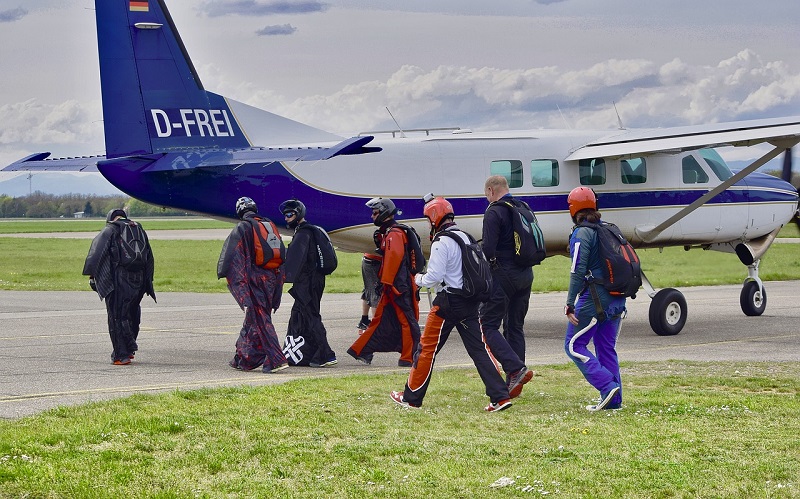
Whether you’re opting for a tandem jump with a skilled instructor, a solo jump with a static line, or an adrenaline-pumping freefall with a parachute, we have all the insights you need. Skydiving is a thrilling and memorable activity, but you need to prepare yourself well before you jump.
You will learn what to expect from different types of jumps, what to wear for comfort and safety, and what to follow and avoid before and during your jump. Keep reading to make your skydiving adventure a success!
How To Prepare For Skydiving: A Step-by-Step Guide for First-Timers
What is Skydiving?
Skydiving is an extreme activity that includes leaping out of an airplane, freefalling through the air, and then safely landing on the ground after releasing a parachute. A unique adrenaline rush is provided by this activity, which draws thrill-seekers from all over the world.
The History of Skydiving
Skydiving has a rich history that dates back to ancient times. The first recorded instance of human beings jumping from heights for recreational purposes can be traced back to the Chinese in the 3rd century BCE. Over the centuries, skydiving has evolved into a well-organized and regulated sport.
Types of Skydiving
Skydiving offers various disciplines and types, catering to different preferences and skill levels. Tandem skydiving, solo skydiving, formation skydiving, and freefly skydiving are the most popular varieties. Each category presents different experiences and difficulties.
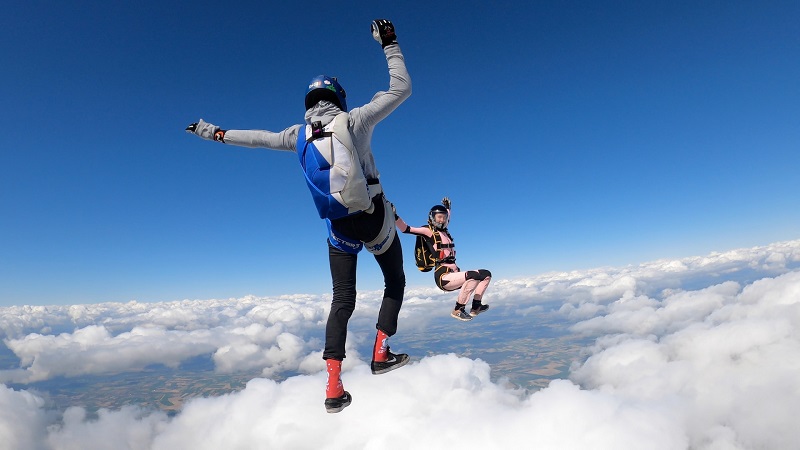
Skydiving Equipment
To ensure a safe and enjoyable skydiving experience, it’s essential to understand the equipment involved. Here are the key pieces of skydiving equipment:
Parachutes
Parachutes are the primary safety equipment used in skydiving. They consist of a canopy, lines, and a deployment system. Modern parachutes are designed to provide a controlled descent and a soft landing.
Harnesses
Harnesses are used to secure the skydiver to the parachute system. They are adjustable and designed to distribute the forces evenly across the body during the freefall and landing phases.
Altitude Devices
Altitude devices, such as altimeters and audible altimeters, are used by skydivers to determine their altitude during the jump. They provide crucial information for deploying the parachute at the right height.
Helmets
Helmets protect the skydiver’s head during the jump and landing. They are designed to provide impact protection and often come with features like camera mounts and audibles for added convenience.
Jumpsuits
Jumpsuits are specialized clothing worn by skydivers. They provide aerodynamic advantages, protection against wind and cold temperatures, and also serve as a visual identifier for formation skydiving teams.
Safety Precautions: How to Prepare for Skydiving?
Skydiving is an extreme sport, and safety should be the top priority for every skydiver. Here are some important safety precautions to follow:
Training and Certification
Before attempting any skydive, it is crucial to undergo proper training and obtain the necessary certification. Training programs teach essential skills, emergency procedures, and safety protocols to ensure a safe skydiving experience.
Physical Fitness
Skydiving requires a certain level of physical fitness. It is important to maintain good overall health, strength, and flexibility to handle the physical demands of the sport.
Weather Conditions
Weather conditions play a significant role in skydiving safety. It is essential to be aware of and understand the impact of weather factors such as wind speed, cloud cover, and temperature before planning a jump.
Pre-jump Checklist
Performing a thorough pre-jump checklist is a vital safety practice. It involves checking all the equipment, securing harnesses, verifying altimeters, and ensuring proper communication with the jump team.
Finding a Reputable Skydiving Center
Finding a reputable skydiving center is essential for a safe and enjoyable experience. Here are some factors to consider when choosing a skydiving center:
- Reputation: Research the center’s reputation by reading reviews and testimonials from previous customers.
- Safety Record: Check the center’s safety record and certifications to ensure they follow proper safety standards.
- Experienced Instructors: Look for a center that employs experienced and certified instructors who prioritize safety.
- Equipment Quality: Ensure that the center uses well-maintained and up-to-date skydiving equipment.
- Facilities and Amenities: Consider the center’s facilities, such as training rooms, briefing areas, and restrooms, to ensure a comfortable experience.
Skydiving Center Near Me
| Long Island Skydiving Center | New York | Website | Phone: +1 631-351-5867 |
| Miami Skydiving Center | Florida | Website | Phone: +1 305-235-3483 |
| DC Skydiving Center | Virginia | Website | Phone: +1 202-509-0799 |
| Chicagoland Skydiving Center | Illinois | Website | Phone: +1 815-561-3663 |
| Skydive Lodi Parachute Center | California | Website | Phone: +1 209-369-1128 |
What To Expect On Your First Jump
Embarking on your first skydiving jump can be both exciting and nerve-wracking. Here are the two primary types of jumps beginners often choose:
Tandem Skydiving
Tandem skydiving is the most common choice for first-time skydivers. In a tandem jump, you are harnessed to an experienced instructor who controls the jump and parachute deployment. This allows you to experience the thrill of skydiving while feeling safe and guided.
Solo Skydiving
For those seeking a more independent experience, solo skydiving is an option once you’ve obtained the necessary training and certification. Solo jumps involve taking full responsibility for the jump, parachute deployment, and landing.
Overcoming Fear of Heights
Fear of heights, also known as acrophobia, can be a common concern for potential skydivers. Here are some strategies to help overcome the fear:
- Understanding the Fear: Educate yourself about the fear of heights and its psychological origins.
- Gradual Exposure: Start by exposing yourself to heights in a controlled environment, such as standing on a tall building or viewing platform.
- Seek Professional Help: Consider seeking therapy or counseling from professionals specializing in anxiety disorders.
- Visualize Success: Use visualization techniques to imagine yourself successfully skydiving and enjoying the experience.
- Support System: Surround yourself with supportive friends or family members who can encourage and motivate you.
Learning Basic Skydiving Techniques: How to Prepare for Skydiving?
Mastering basic skydiving techniques is essential for a safe and enjoyable experience. Here are some key techniques to learn:
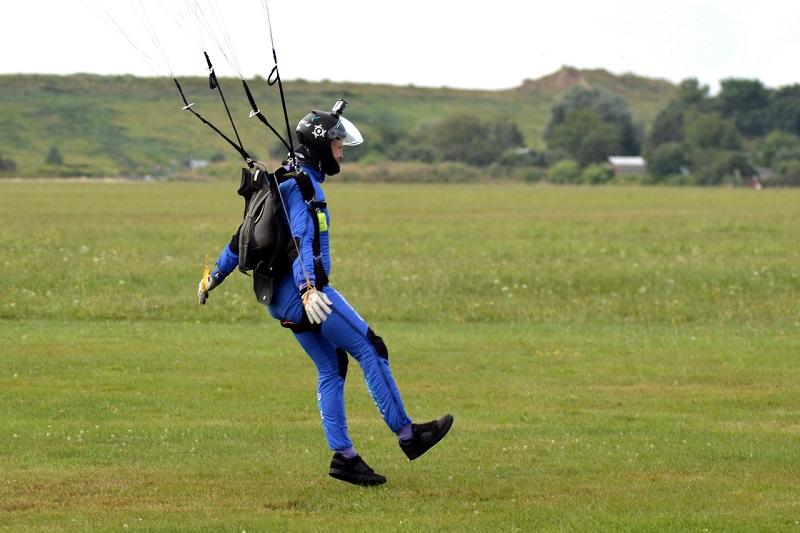
Body Position
Maintaining the correct body position during freefall is crucial for stability and control. This includes maintaining a stable arch position with arms and legs extended.
Exiting the Aircraft
Proper exit technique ensures a smooth and controlled transition from the aircraft to the freefall position. It involves following the instructor’s instructions, maintaining body position, and avoiding any contact with the aircraft.
Freefall Techniques
Freefall techniques focus on body control, stability, and maneuvering in the air. These include turns, forward movement, backward movement, and maintaining proximity with other skydivers in formation jumps.
Canopy Control
Canopy control refers to controlling the parachute after deployment. It involves steering, making turns, and landing safely at the designated landing area.
Advanced Skydiving Maneuvers
Once you’ve mastered the basics, you can explore advanced skydiving maneuvers. Here are some popular maneuvers:
Tracking
Tracking involves flying horizontally through the air after parachute deployment. It allows skydivers to cover longer distances and create separation from other jumpers, preparing for landing.
Formation Skydiving
Formation skydiving involves flying in close proximity to other skydivers and forming predetermined formations in the air. It requires teamwork, communication, and precise body positioning.
Freefly Skydiving
Freefly skydiving focuses on acrobatic maneuvers performed in a head-down or head-up orientation. It offers a dynamic and challenging experience for experienced skydivers.
Skydiving License and Ratings
As you gain experience and proficiency in skydiving, you can pursue different licenses and ratings. Here are the main licenses in skydiving:
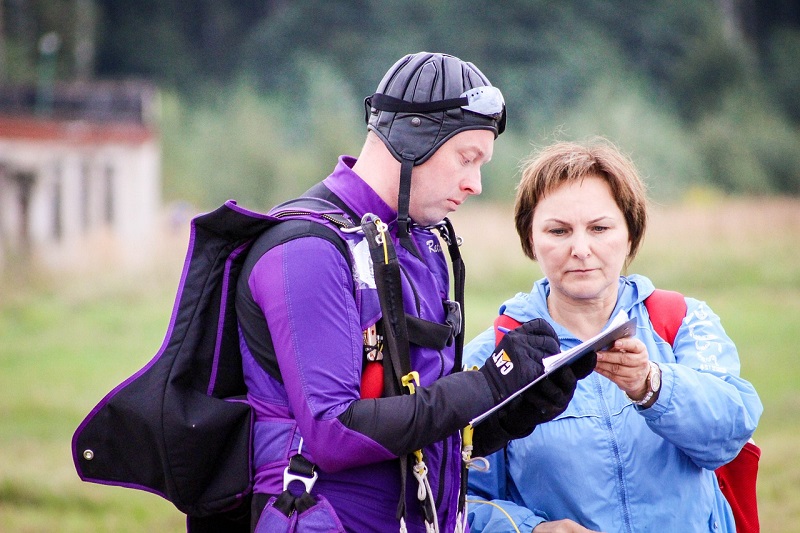
A-License
The A-License is the first level of skydiving certification. It requires completing a specified number of jumps, passing written exams, and demonstrating proficiency in basic skydiving skills.
B-License
The B-License is the second level of certification. It involves additional training, including advanced canopy control, emergency procedures, and demonstration of increased skill level.
C-License
The C-License signifies an intermediate level of skydiving proficiency. It requires a higher number of jumps, additional training in advanced maneuvers, and knowledge of equipment maintenance.
D-License
The D-License is the highest level of certification in skydiving. It signifies expert-level proficiency and requires a significant number of jumps, mastery of advanced skills, and participation in competitive skydiving events.
Skydiving Competitions and Events
Skydiving offers opportunities for competitive events and competitions. Here are some popular skydiving competitions:
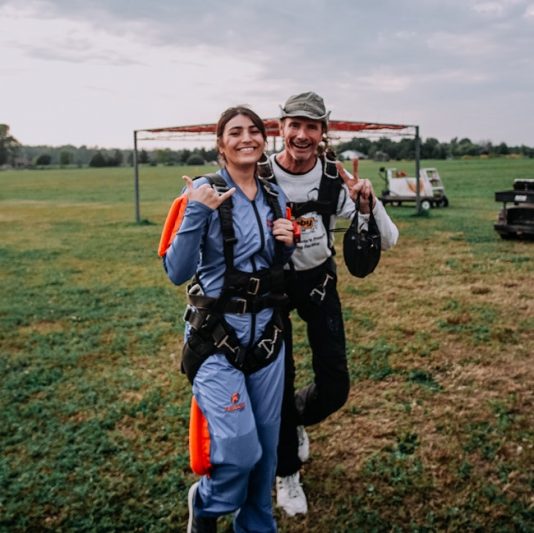
Formation Skydiving Competitions
Formation skydiving competitions involve teams performing intricate formations in the air within a specified time limit. Teams are judged based on the number of formations completed accurately.
Freefly Competitions
Freefly competitions focus on artistic and acrobatic maneuvers performed in the air. Participants are judged on creativity, execution, and difficulty of the maneuvers.
Skydiving Safety Incidents and Awareness
While skydiving is generally a safe sport, it’s important to be aware of potential risks and safety incidents. Stay informed about safety guidelines, incident reports, and ongoing efforts to improve safety in the skydiving community.
Skydiving and Photography
While skydiving is generally a safe sport, it’s important to be aware of potential risks and safety incidents. Stay informed about safety guidelines, incident reports, and ongoing efforts to improve safety in the skydiving community.
Skydiving offers incredible opportunities for aerial photography and videography. Capture your skydiving adventures or hire a professional skydiving photographer to document your jumps and create lasting memories.
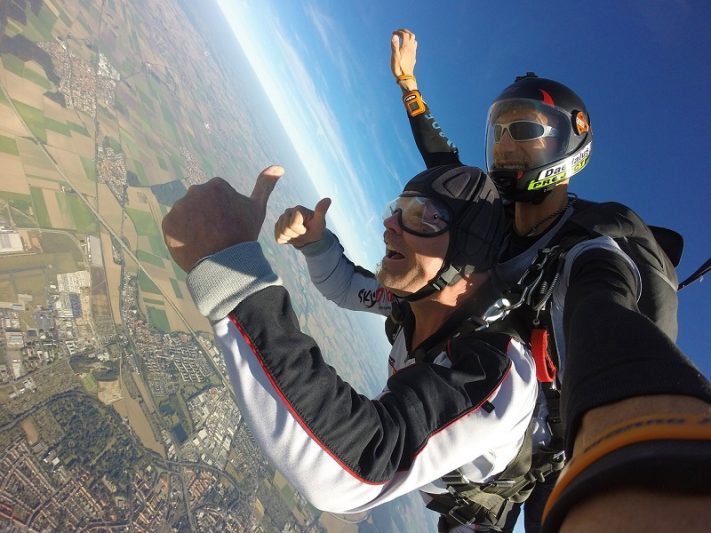
Skydiving as a Career
For those passionate about skydiving, it is possible to turn it into a career. Skydiving careers can include becoming a professional skydiving instructor, photographer, or videographer, or participating in demonstration jumps for special events.
Skydiving in Different Locations
Skydiving can be enjoyed in various locations, each offering unique scenery and experiences. Here are some popular types of skydiving locations:
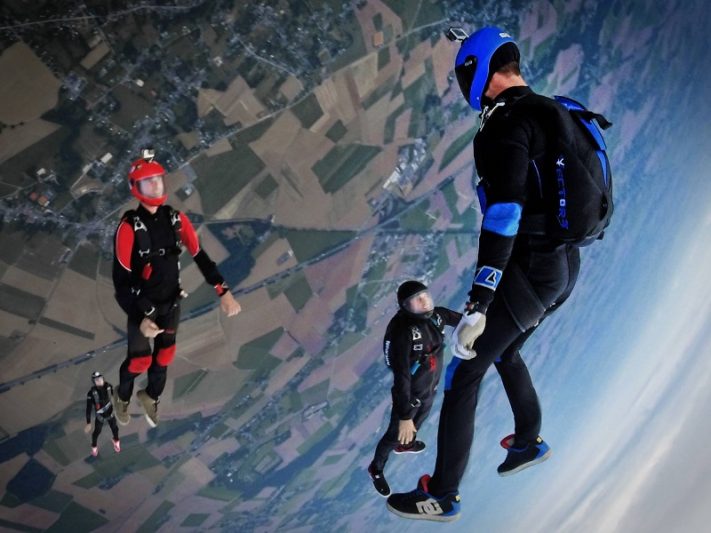
Skydiving Over Mountains
Skydiving over mountains provides breathtaking views and a sense of adventure as you descend through scenic landscapes. It requires additional training due to potential weather and wind pattern challenges.
Skydiving Over Oceans
Skydiving over oceans offers stunning views of coastlines and the vastness of the sea. It often involves jumping from aircraft or helicopters near coastal areas.
Skydiving Over Cities
Skydiving over cities provides a different perspective as you glide through urban skylines. It requires precise navigation and adherence to airspace regulations.
The Thrill of Skydiving
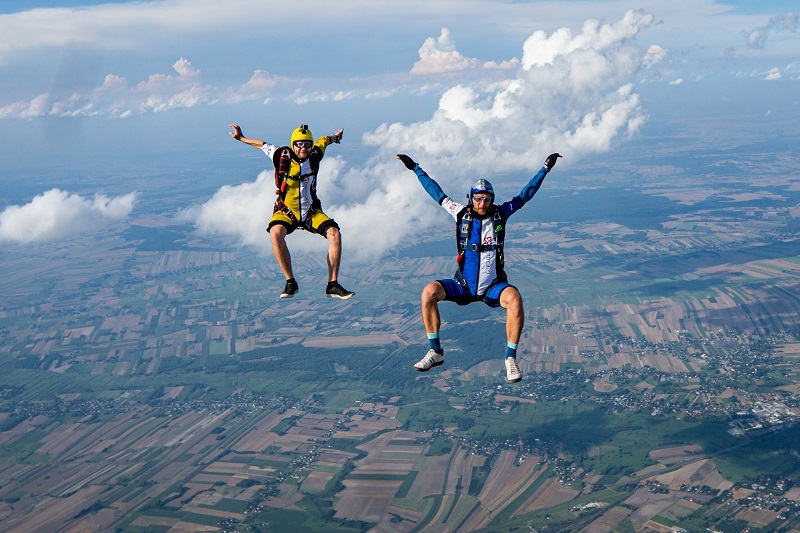
Skydiving is an exhilarating and life-changing experience that offers a unique perspective on the world. The rush of adrenaline, the freedom of flight, and the sense of accomplishment make it an adventure worth pursuing.
FAQs: How To Prepare For Skydiving
How much does skydiving cost?
Skydiving can be safe when proper training, equipment, and safety guidelines are followed. Reputable skydiving centers prioritize safety and ensure that instructors are experienced and certified.
The cost of skydiving varies depending on the location, type of jump, and additional services. On average, a tandem skydive can cost between $200 to $300, while solo jumps and advanced training can have additional expenses.
Is skydiving safe?
Skydiving can be safe when proper training, equipment, and safety guidelines are followed. Reputable skydiving centers prioritize safety and ensure that instructors are experienced and certified.
What is the minimum age for skydiving?
The minimum age for skydiving varies by country and skydiving center. In many places, the minimum age is 18 years old, while some centers may allow minors with parental consent.
Can I skydive if I have a fear of heights?
Yes, many people with a fear of heights have successfully overcome their fears through skydiving. Proper training, gradual exposure, and support from experienced instructors can help individuals overcome their fears.
How long does a skydive last?
The duration of a skydive depends on various factors, including the altitude of the jump and the type of skydive. On average, a skydive lasts between 5 to 7 minutes, including freefall and parachute descent.
What is the weight limit for skydiving?
Weight limits for skydiving vary depending on the equipment used and the skydiving center’s policies. In general, most centers have weight limits between 220 to 250 pounds for tandem skydiving.
Can I go skydiving if I have a medical condition?
Certain medical conditions may prevent individuals from skydiving. It is important to consult with a doctor and inform the skydiving center about any medical conditions or concerns before participating in a jump.
Can I Skydive with Glasses or Contact Lenses?
Yes, it is possible to skydive with glasses or contact lenses. However, it is recommended to secure them properly to ensure they don’t fall off during the jump. Consult with the skydiving center for specific guidelines.
What Should I Wear for Skydiving?
Wear comfortable clothing that allows freedom of movement. Avoid loose accessories and jewelry that may pose a risk during the jump. Closed-toe shoes are also recommended for safety.
How Do I Find a Reputable Skydiving Center?
To find a reputable skydiving center, research online reviews and testimonials. Look for centers that have a good safety record, experienced instructors, and well-maintained equipment. Asking for recommendations from experienced skydivers can also be helpful.
Conclusion
Congratulations! You have now gained comprehensive knowledge on how to prepare for skydiving. From understanding the basics of skydiving to learning about advanced techniques and safety precautions, you are well-equipped to embark on this thrilling adventure. Remember to choose a reputable skydiving center, undergo proper training, and always prioritize safety. Get ready to experience the adrenaline rush and the incredible freedom of flight as you skydive into a whole new world of adventure!

Be the first to comment